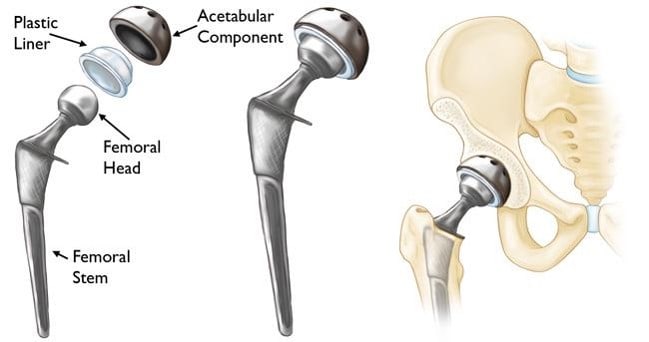About
Artifial Orthopadics is a project of Biomechanics. It is very useful for the people who are unable to do certain activities like sitting, walking, writing, and many other daily routine activities. It is made with the help of 3D printing. This artificial joint (prosthesis) helps reduce pain and improve function. Hip replacement surgery might be an option if hip pain interferes with daily activities and nonsurgical treatments haven’t helped or are no longer effective. The most common reason to need hip replacement is arthritis damage. Hip replacement surgery is a procedure in which a surgeon makes an incision over the side of the thigh, removes the diseased parts of the hip joint, and replaces them with new, artificial parts.
Why It's Done
- Osteoarthritis. Commonly known as wear-and-tear arthritis, osteoarthritis damages the slick cartilage that covers the ends of bones and helps joints move smoothly.
- Rheumatoid arthritis. Caused by an overactive immune system, rheumatoid arthritis produces a type of inflammation that can erode cartilage and occasionally underlying bone, resulting in damaged and deformed joints.
- Osteonecrosis. If there isn't enough blood supplied to the ball portion of the hip joint, such as might result from a dislocation or fracture, the bone might collapse and deform.
Technology Used
There are several technologies used in hip joint implants. According to the Hospital for Special Surgery (HSS), some of the latest technologies used in total hip replacement surgeries include:
-
3D printed implants: 3D printing technology has enabled surgeons to create custom implants that fit a patient’s unique anatomy. This technology allows for greater precision in implant design and placement .
-
Smart sensors and other wearables: Smart sensors can be used to monitor a patient’s progress after surgery. These sensors can track a patient’s range of motion, activity level, and other metrics that can help doctors assess recovery progress .
-
Augmented reality: Augmented reality technology can be used to create a 3D model of a patient’s hip joint before surgery. This model can be used to help surgeons plan their approach and visualize how different implant options might fit .
Solution Developed

Several solutions have been developed to improve hip joint implants. One such solution is the use of drug-eluting polymers on the surface of artificial joints, which can make them infection-free. Another solution is the use of additive manufacturing techniques to create hip replacements with complex geometries, which require precise techniques.
It is important to note that hip implants are designed with optimal chemical composition, surface charge, and roughness for improved osseointegration. The proteins that adsorb to these surfaces and foster osseointegration are also proteins that encourage bacterial attachment and subsequent biofilm formation. Infection is an uncommon complication that leads to implant failure and is devastating for patients .








